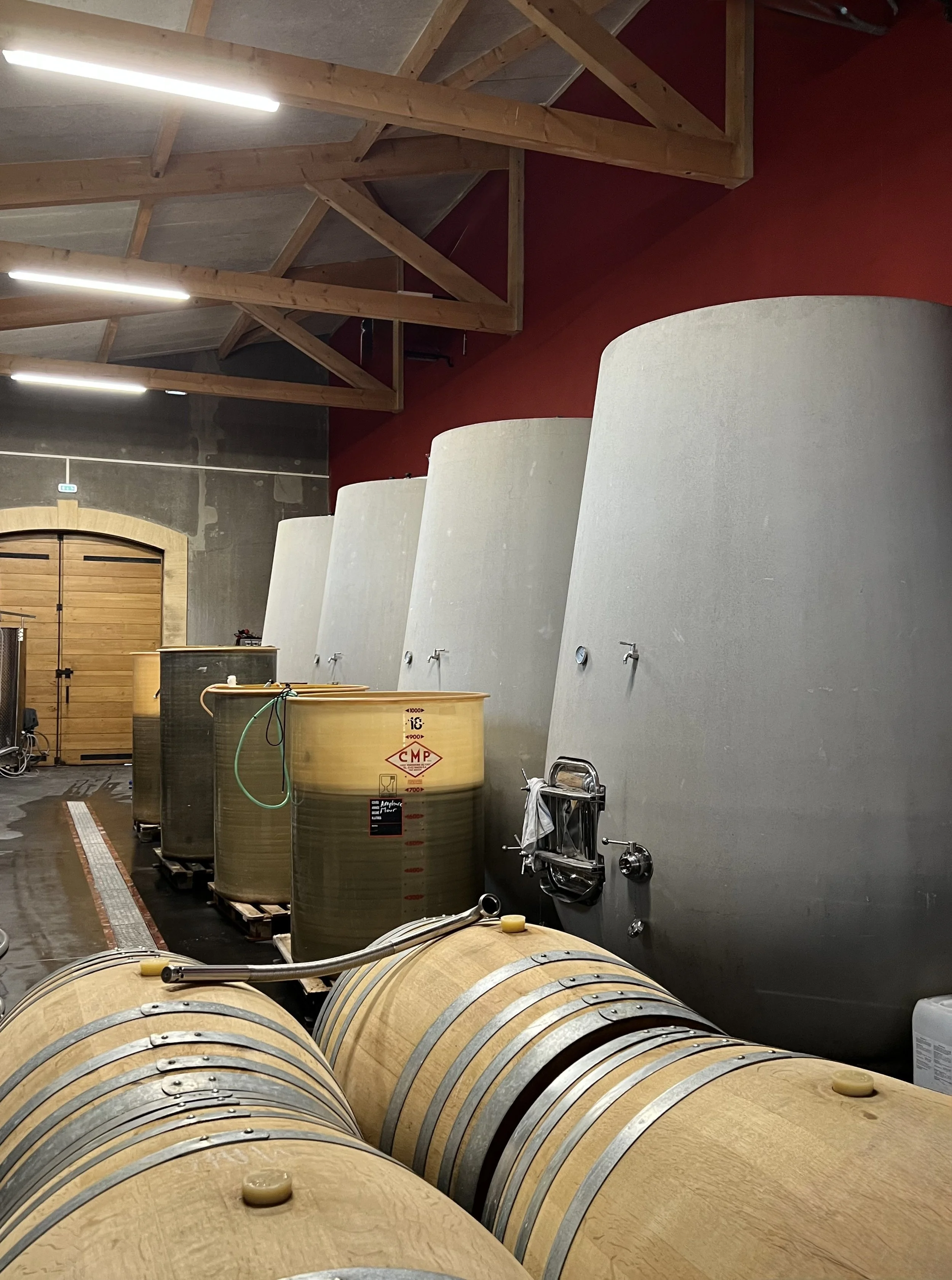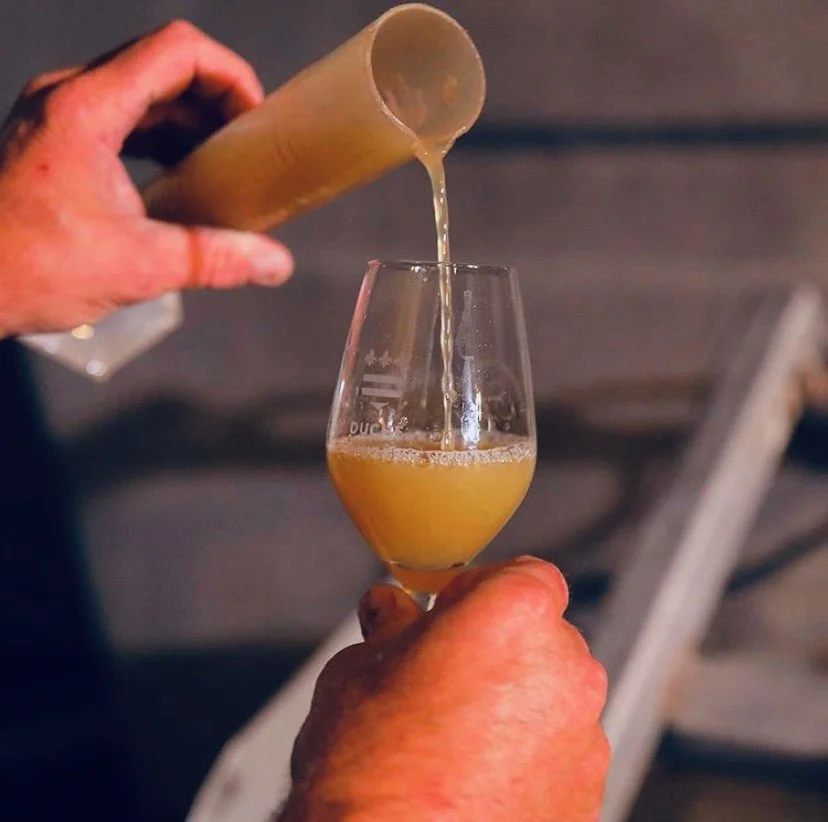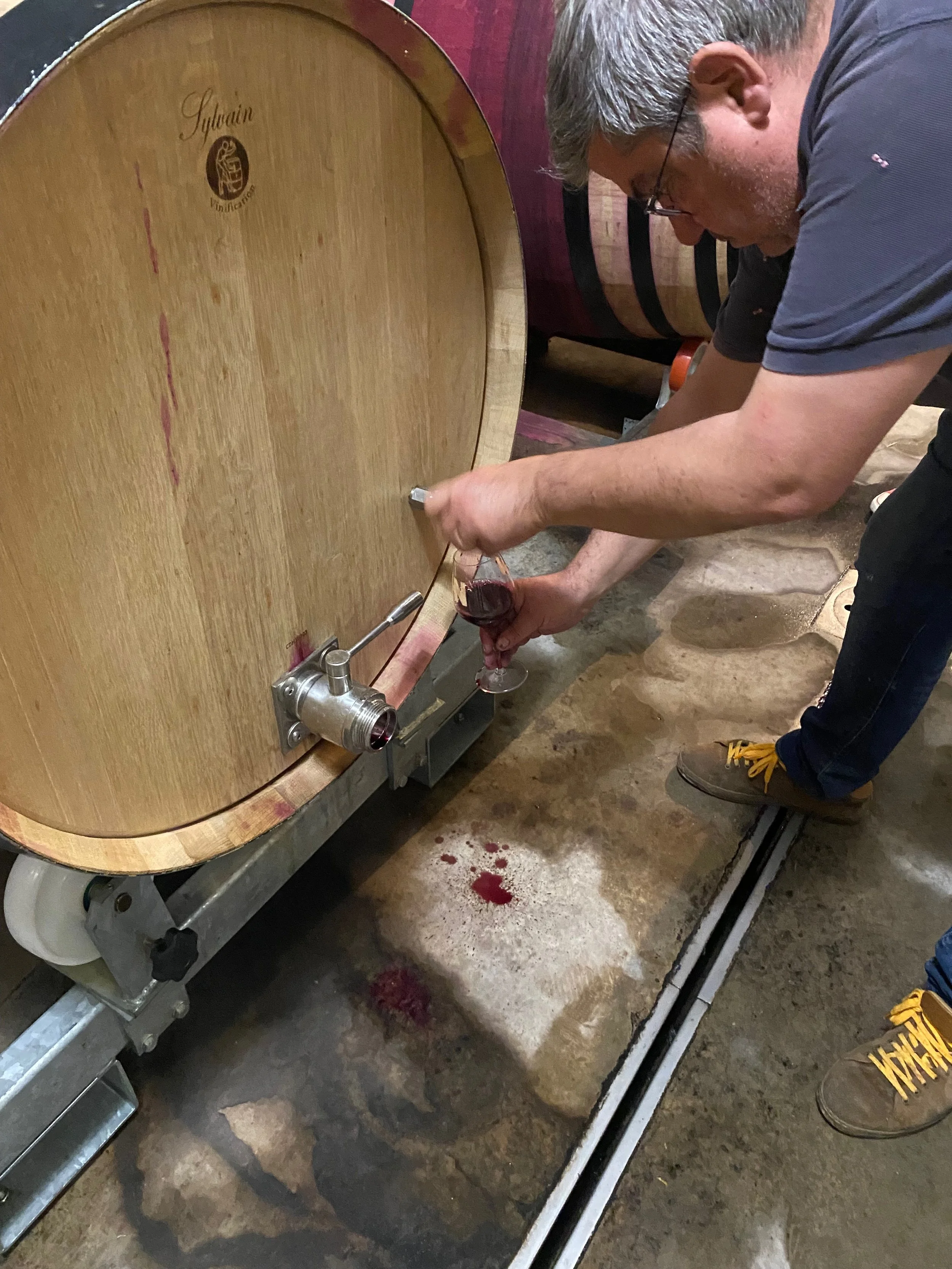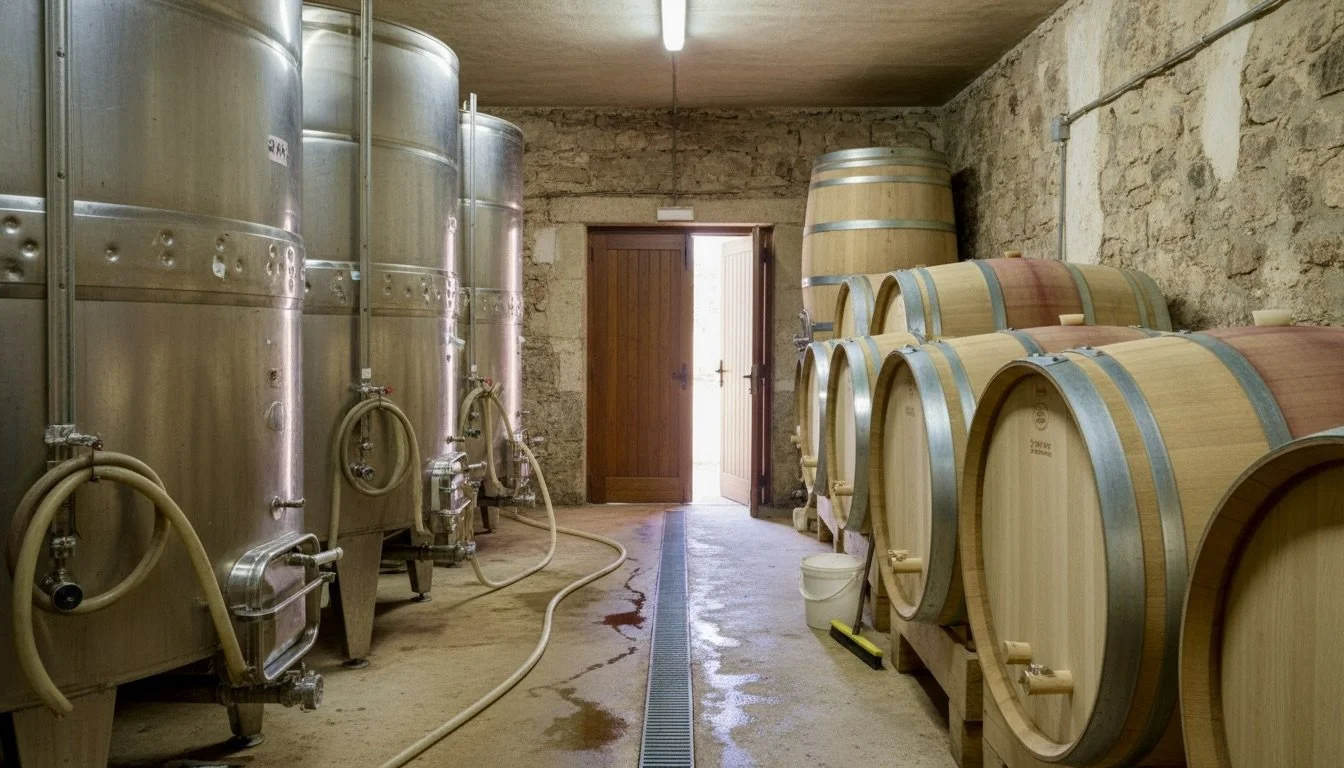November in the Languedoc: Wine in Transformation
/November in the Languedoc Cellar: the quiet transformation.
In November, the Languedoc vineyard rests — but inside the cellar, a silent transformation begins. Discover how malolactic fermentation softens acidity, rounds texture, and defines the future character of each wine.
The wines begin to rest, soften, and clarify. The pace slows - this is the moment when the wine begins its true transformation — the one that will define its elegance, its balance, its soul.
What Is Malolactic Fermentation?
The first fermentation (in October) is all about turning sugar into alcohol. The second fermentation — November’s domain — is gentler, slower, almost meditative.
This is malolactic fermentation (MLF), a natural bacterial process that:
Converts malic acid (sharp, like green apples)
Into lactic acid (soft, like yogurt or cream)
The effect? A smoother, rounder and more harmonious wine. This is where sharp angles blur. Where tension becomes texture. Where youthful acidity mellows into something long, graceful, and drinkable.
How wine changes in November
❤️ Red Wines: Softening the Core
In red wine, MLF is nearly universal — and essential. Tannins integrate. Harshness disappears. The wine gains shape and weight. Fruit notes deepen into something more complex, more structured, more recognizably “red”. Think of it as the moment the wine stops shouting and begins speaking clearly.
White Wines: A Delicate Decision
🤍 White wines offer the winemaker a choice:
If we block MLF:
The wine stays bright, crisp, energetic — ideal for Sauvignon Blanc, Picpoul, and fresh Mediterranean whites.If we allow MLF:
It becomes softer, rounder, creamier — think of the smooth feel of an oaked Chardonnay.
Both styles are beautiful. The question is simply: Which expression will best reveal this year’s vintage?
💗 Rosé Wines: A Gentle Balance
Rosés walk a fine line.
A partial or controlled MLF can add subtle roundness while keeping that refreshing, summery vibrancy.
Too much softness, and the wine loses its lift. Too little, and it feels sharp. November is when we find the sweet spot.
Once MLF finishes, we rack the wine — moving it off its fine lees, leaving clarity and calm behind.
Precision Meets Patience
During November, our work is both technical and sensory: We taste daily looking for softness, roundness, and balance.
From Science to Emotion
Racking: moving wine from one tank or barrel to another helping the wine breathe and clarify.
The first real taste of the vintage
November is the month we begin to truly know the new wines. They’re not finished, not polished, not ready — but they whisper hints of what they will become.
Racking: helping the wine breathe and clarify
Another key November task is racking – moving wine from one tank or barrel to another.
After fermentation, a layer of sediment collects at the bottom of the tank. This is made up of dead yeast cells, grape solids and other tiny particles.. Winemakers carefully siphon or pump the clear wine off this layer, leaving the heavier sediment behind.It also helps the wine smell and taste cleaner, and it’s an early step towards clarity. The wine also gets a gentle introduction to air, which can help young reds open up and lose some of their initial toughness.
Imagine decanting a bottle to let it breathe – racking is a similar idea, but much earlier in the wine’s life and on a much bigger scale.
The wine enters a new phase of its life: the slow, quiet rest of winter.
The first real taste of the vintage
November is the month we begin to truly know the new wines.
They’re not finished, not polished, not ready but they whisper hints of what they will become.
Reds: pure fruit, youthful tannins, the early shape of structure
Whites: freshness, texture, and glimpses of balance
Rosés: delicate fruit and gentle acidity
Every sip is a time capsule of the growing season — the sunlight, the soils, the harvest decisions, and the natural expression of the Languedoc itself.
The beauty of the still cellar
Outside, the vineyard begins to slumber. Inside, the wines rest in silence, transformed from sharp, young juice into something smoother, softer, more complete. November gives wine its grace.
When you taste a silky Languedoc red in a year or two, you’re tasting the quiet work of this moment — the invisible chemistry that shapes texture and elegance.
A wine cellar ready for november
The harvest may be over, but the story of the vintage is still being written in every tank and barrel. November is when wines start to find their voice.






